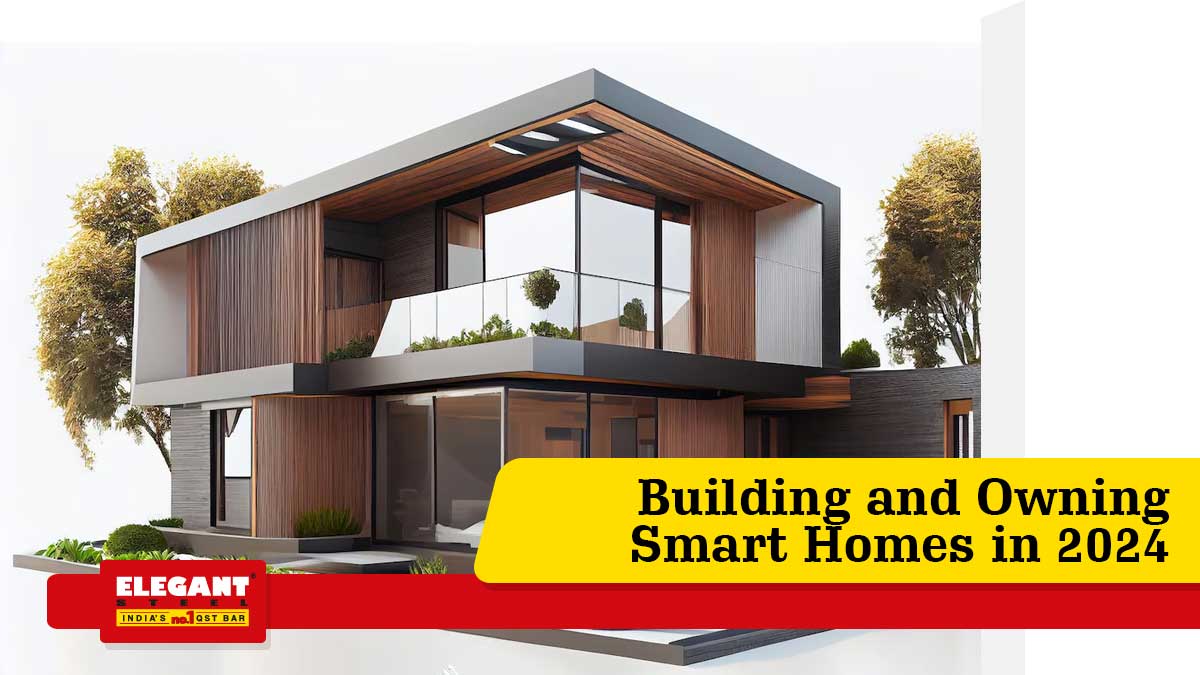In 2024, we are in an era of technological advancements. The concept of smart homes has gained significant popularity. These are modern residences with cutting-edge devices and systems connected to the internet, which can be controlled remotely and automated to perform tasks. From adjusting temperature and lighting to managing security systems and home appliances, you can do it all, enhancing your convenience, comfort, and energy efficiency. These are designed to enhance the overall living experience by integrating technology into everyday activities.
What Should a Smart Home Include?
Smart Homes should ideally include:
- Home Automation
A robust home automation system can allow you to control and monitor various aspects of your home remotely. This includes features such as:
- Smart lighting,
- Automated blinds, and
- Programmable thermostats
Integration with voice assistants like Amazon Alexa or Google Assistant can make it easier for you to control these devices through voice commands.
- Security Systems
Security is a top priority in smart homes, which can be ensured with advanced security systems like:
- Smart locks,
- Video doorbells,
- Surveillance cameras, and
- Motion sensors
You can connect these devices to your smartphone, monitoring the security of your home from anywhere and receiving alerts in case of any suspicious activities.
- Energy Management
Energy efficiency is a key aspect of a smart home. It should include smart energy management systems that help optimize energy consumption. You can save on energy expenses through:
- Smart thermostats that adjust temperature based on occupancy and preferences,
- Smart plugs that monitor and control energy usage of appliances, and
- Solar panels or smart grid integration to harness renewable energy sources.
- Entertainment and Media
A smart home should offer a seamless entertainment experience. This can include integrated audio systems, smart TVs, and media streaming devices. The integration can allow you to access your favorite music and movies from various platforms. Integration with voice control and smart assistants can enhance the user experience further.
How Should You Build and Own a Smart Home?
You have to follow these steps:
- Plan and research
Start by defining your goals and requirements for a smart home. Research the various smart devices, systems, and brands available in the market. Understand their features, compatibility, and pricing. You can make informed decisions during the building and owning process.
- Integration and compatibility
Choose devices and systems that are compatible with your smart home; which can seamlessly integrate with each other. This will help you with centralized control and automation.
- Professional Installation
Seek professional assistance for the installation and integration of smart home devices. Professionals can ensure proper wiring, configuration, and setup, maximizing the efficiency and functionality of your smart home systems.
- Network Infrastructure
A reliable and robust network infrastructure is essential for a smart home. Invest in a high-speed internet connection. You should consider installing a mesh Wi-Fi network. This can help to ensure strong and stable connectivity throughout your home.
- Privacy and Security
Smart homes involve the collection and sharing of personal data, prioritizing privacy and security. Choose devices and systems from reputable brands that offer robust security features and regularly update their firmware to protect against potential vulnerabilities.
Building and owning a smart home in 2024 can redefine the way you interact with your living space.
While you build a Smart Home, keep in mind that the strength, durability and stability of the structure should match the technological innovation on the inside. Elegant QST Bar provides you with the best TMT steel bars for accurate reinforcement of your smart home, making it safer and long-lasting.


